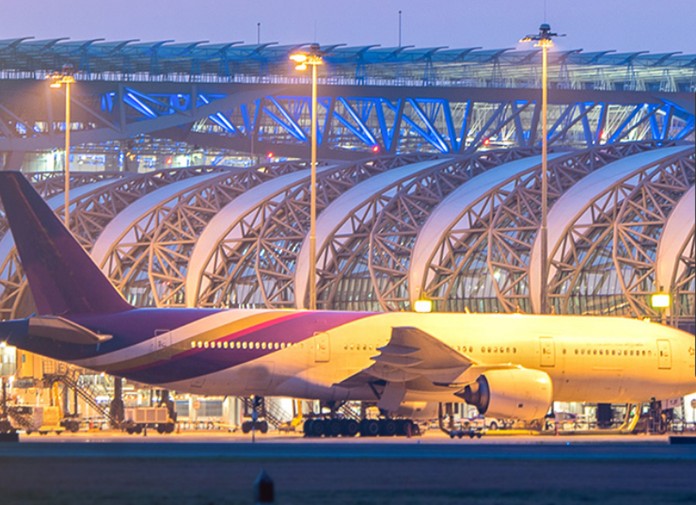
The Civil Aviation Authority of Thailand (CAAT) on Monday issued the “Notification on Conditions for Aircraft Permission to Enter Thailand (No. 3)”, effective from 4 August, 2020.
The CAAT’s third revised notification adjusted its No. 2 announcement to be in line with the Royal Thai Government’s fourth extension of the Emergency Decree. The ban on international commercial aircraft remains in place.
Currently, only the following types of aircraft can enter Thailand: state or military aircraft; emergency landing flights; technical landing flights without disembarkation; humanitarian aid, medical and relief flights; repatriation flights; cargo flights, and *passenger flights carrying persons permitted to enter Thailand (Thai and non-Thai nationals).
The CAAT’s list of 11 groups of Thai and non-Thai nationals permitted to enter Thailand remains in effect, but adjustment has been made to groups (7), (8), and (11) as per the following:
(1) Thai nationals.
(2) Persons with exemption or persons being considered, permitted or invited by the Prime Minister, or the head of responsible persons accountable for resolving state of emergency issues to enter the Kingdom, pertaining to necessity. Such consideration, permission, or invitation may be subject to specific conditions and time limits.
(3) Persons on diplomatic or consular missions, or under international organizations, or representatives of foreign governments performing their duties in the Kingdom, or persons of other international agencies as permitted by the Ministry of Foreign Affairs pertaining to necessity, including their spouse, parents, or children.
(4) Carriers of necessary goods subject to immediate return after completion.
(5) Crew members who are required to travel into the Kingdom on a mission and have a specified date and time for return.
(6) Non-Thai nationals who are a spouse, parents, or children of a Thai national.
(7) Non-Thai nationals who hold a valid certificate of permanent residency in the Kingdom, or permission to take up residence in the Kingdom, including their spouse or children.

(8) Non-Thai nationals who have a work permit or have been granted permission from government agencies to work in the Kingdom, including their spouse or children; or foreign workers or those who have been granted permission to bring in foreign workers to work in the Kingdom.
(9) Non-Thai nationals who are students of educational institutions approved by Thai authorities, including the parents or guardians of the students, except for students of non-formal educational institutions under the law on private schools and of other similar private educational institutions
(10) Non-Thai nationals who are in need of medical treatment in Thailand, and their attendants. However, this shall not include medical treatment for COVID-19.
(11) Non-Thai nationals who are permitted to enter the Kingdom under a special arrangement with a foreign country or have been granted permission by the Prime Minister – all of whom must strictly adhere to the Kingdom’s communicable disease prevention and control.
*The entry into Thailand of the persons of any of the following types, by aircraft, shall be permitted, provided that they comply with the conditions, time limits, and rules of the authorized persons under the Thai immigration law, communicable diseases law, air navigation law, and the Emergency Decree on Public Administration in Emergency Situation, for the prevention of the spread of disease, and the organization of the number of persons entering Thailand in accordance with the capability of the competent officers or the communicable disease control officers for the screening and arrangement of facilities for isolation, quarantine and control for observation.
 |
 |
 |





